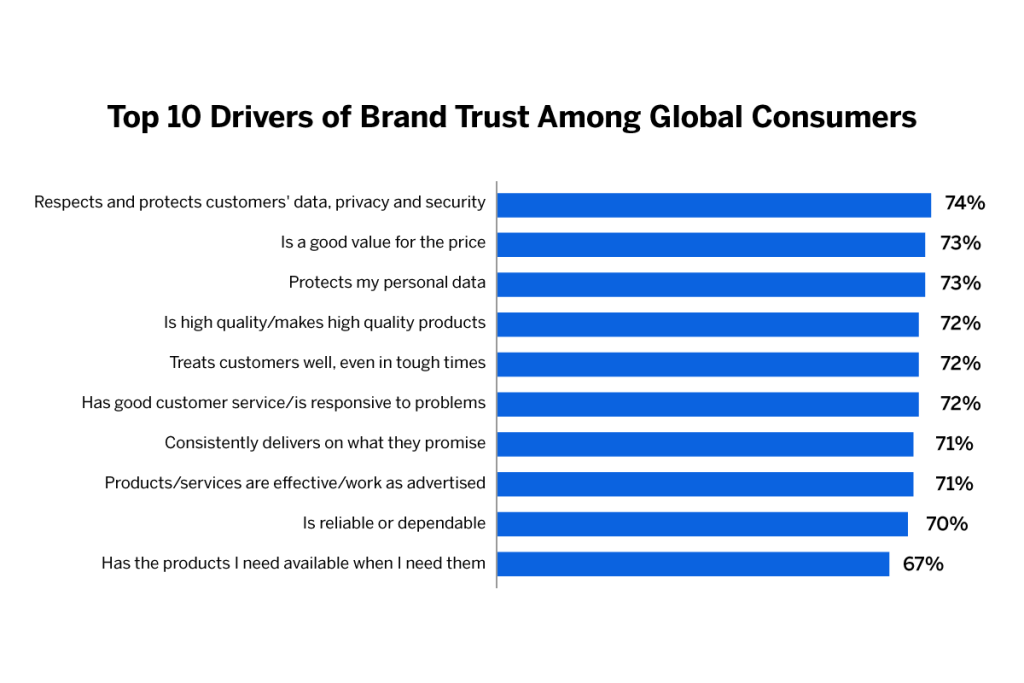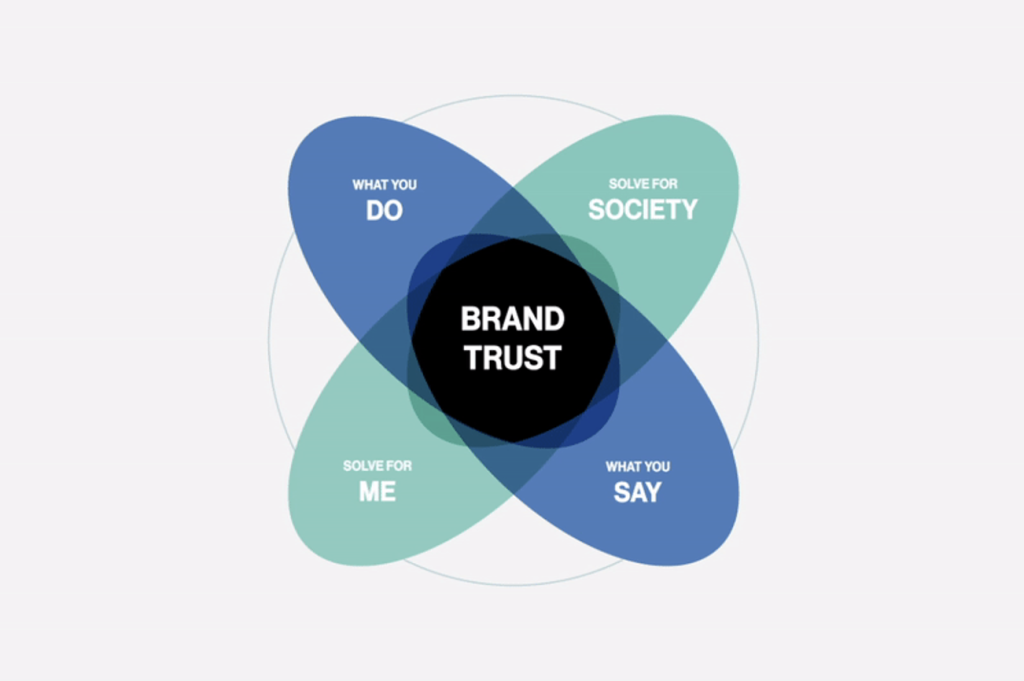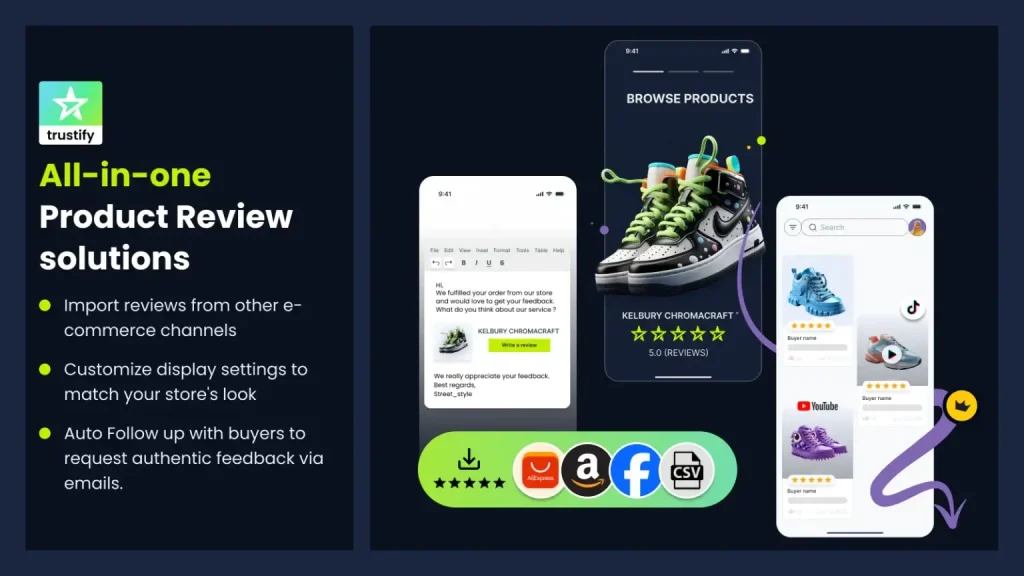Building brand trust is essential in today’s competitive market. But how can you achieve it effectively? This article will guide you through proven strategies to enhance your brand’s credibility and foster strong customer relationships.
Let’s get started!
What is Brand Trust?
Brand trust is the confidence customers place in a company and its products or services. This confidence stems from the company’s reputation, transparency, fairness, and the value it provides. These elements collectively contribute to fostering a trusting relationship between the customer and the company. It’s crucial to understand that building brand trust is a gradual process, requiring time, effort, and consistency.

Why Does Brand Trust Matter?
Brand trust can be what sets your product or service apart, leading consumers to choose it over a competitor’s.
Customers buy from businesses that take a stand
The 2021 Edelman Trust Barometer reveals that 86% of respondents believe CEOs should publicly address important societal issues. More consumers are now choosing to support businesses that align with their political or social beliefs. This is particularly true for millennials, with 83% valuing purchases from brands that support their views.
Building brand trust involves aligning your business actions, experiences, products, and services with the values you promote. For instance, if a company claims to be environmentally friendly but uses non-recyclable packaging, customers will notice the inconsistency and seek alternatives.

Customers leave if brand promises aren’t met
Our research shows that 65% of consumers have switched brands because their customer experience did not match the brand’s promises. This trend is especially strong among younger consumers, with 70% of Gen Z and millennials changing brands when their expectations are not met. Even older consumers are not immune; over 50% will leave if their expectations aren’t fulfilled.
Brand trust can help retain loyal customers even when they encounter occasional subpar experiences. Building a reputation for reliability and consistency means that customers are more likely to view negative interactions as exceptions rather than the norm.
Reputation can make or break a purchase decision
Our survey found that 63% of consumers consider a company’s reputation when making purchasing decisions. While brand trust might seem intangible, it is a crucial metric for consumers when choosing a brand.
Many businesses attempt to boost their brand trust by leveraging endorsements from well-known brand ambassadors. However, 39% of potential buyers do not view celebrity or public figure endorsements as a significant factor in their purchasing decisions.
Buying brand trust might work for some customers, but to create sustainable trust, businesses must demonstrate integrity and consistency across all aspects of their operations.

How to Build Brand Trust?
Building trust with your audience is essential for any brand’s success. Trust fosters loyalty, encourages repeat business, and can differentiate your brand in a competitive market. Here’s how to build brand trust effectively.
#1 Using Social Proof and User-Generated Content
Consumers have grown more skeptical of brand messages, knowing that marketing departments may not always be truthful. This is why social proof and user-generated content have become crucial in the digital age.
Customer testimonials and reviews build authenticity. When these statements align with the brand’s messaging, they significantly enhance trust. User-generated content, such as product reviews, further supports this process, helping to establish a brand as trustworthy and a leader in its industry.
Adding social proof to your website can help increase conversion rates. Tools like the Trustify Review App make it easier to display customer reviews and testimonials effectively, helping to build trust with potential buyers.

#2 Engaging in Transparent Communication
Clear and honest communication fosters trust between brands and consumers. Customers understand that businesses, like individuals, can make mistakes or need to improve in certain areas.
For instance, the cosmetics retailer Lush has been transparent about its goal to achieve zero waste. Besides offering packaging-free products and refill options, the company now runs three zero-waste stores in Europe.
Besides their remarkable success on social media, Zomato is a prime example of open communication. A few years ago, Zomato faced an issue involving one of its delivery partners and a customer. The founder addressed the situation on social media, showing empathy and informing the audience about their actions.

#3 Put a Face to the Brand
To build trust, it’s essential to humanize your brand by showcasing the people behind it. Allowing customers to see the individuals who make up your company helps them connect on a personal level and feel part of a larger community, which also enhances your Employer Brand. A great method to achieve this is through videos. Videos enable customers to meet your employees and see the faces representing your brand.
For intance, Zappos frequently shares behind-the-scenes videos and employee stories, providing a glimpse into their company culture. These videos highlight various team members, showcasing their roles and personalities, which helps customers feel more connected to the brand. You can explore their videos here.
#4 Maintain and Enhance Your Social Media Presence
To build trust in your business, it’s crucial to have a strong presence on popular platforms like Facebook, Instagram, X, or TikTok. This involves regularly posting high-quality content relevant to your target audience. For instance, if you’re a clothing company, you might share fashion tips or style inspiration to demonstrate your expertise and passion for the industry. Promptly responding to reviews and comments, both positive and negative, shows that you are attentive to your customers and willing to address their concerns.
Encouraging user-generated content is a highly effective way to build brand trust on social media. This involves customers sharing photos or videos of themselves using your products, which helps build trust by showcasing real people enjoying your offerings.
#5 Provide Information that Guides Customers to Desired Solutions
Customers seek solutions through your offerings. Your marketing should focus on guiding them to these solutions, setting an expectation that you can meet their needs without aggressive sales tactics. Remember, customers purchase for their own benefits, so your marketing should be informative and helpful, ensuring they get what they need.
HubSpot provides valuable blog content that addresses common marketing challenges, offering tips and insights without pushing their products. This approach helps potential customers see the value in their offerings and positions HubSpot as a helpful resource.

#6 Avoid Making Unkept Promises
It’s crucial to deliver exactly what you promise to customers. If you claim to offer next-day delivery but can’t meet that deadline, you’ll fail to meet expectations and damage your brand trust. Ensure all promises are realistic and achievable to maintain credibility and trust.
Amazon Prime is known for its reliable two-day shipping promise. By consistently meeting this expectation, Amazon has built a strong reputation for dependable service. If they fail to deliver on this promise, it could significantly harm customer trust.

#7 Use Word-Of-Mouth Marketing
Today’s consumers demand a seamless customer experience that surpasses previous standards. With social media amplifying word-of-mouth marketing, brands risk harsh reviews if their customer service falls short.
Consumer buying behaviors have evolved; they now prioritize research. Seeing that a product satisfies others convinces them to make a purchase.
While negative reviews can harm trust, positive reviews on review sites can attract potential customers by portraying a trusted brand.
Glossier has effectively used word-of-mouth marketing by encouraging customers to share their experiences on social media. Positive reviews and user-generated content have helped build a loyal customer base and attract new buyers by showcasing satisfaction and trust in the brand.

Pro Tips: Future Challenges and Opportunities in 2024
As digital asset management expands to include various channels like social media, in-house content, print, mobile, and web, marketing teams face increasing difficulties in managing their digital assets. Ensuring consistency in branded communications has become a top priority for brand managers. Consequently, these systems have become essential tools, addressing the complexities of managing extensive digital inventories effectively.
In 2024, businesses will face several challenges in building brand trust. These include dealing with the overwhelming amount of information consumers receive from different channels, keeping communication consistent, and addressing concerns about data privacy. Additionally, staying updated with the latest technology is crucial but can be challenging.
However, there are opportunities to build trust as well. Using advanced digital asset management systems can help keep communication consistent and organized. Providing personalized customer experiences and showcasing positive reviews and user-generated content can strengthen credibility. Being transparent, authentic, and focusing on sustainability can further build trust and loyalty with consumers.
Wrap up
Brand trust depends on being honest and reliable. Consumers get a lot of information online and in their daily lives, so they pay close attention to whether a company’s actions match its words (authenticity) and if it keeps its promises (credibility).
These factors are crucial for building brand trust, which can determine whether a business struggles or succeeds. Use the strategies mentioned above to improve your brand trust and see positive results for your business.
